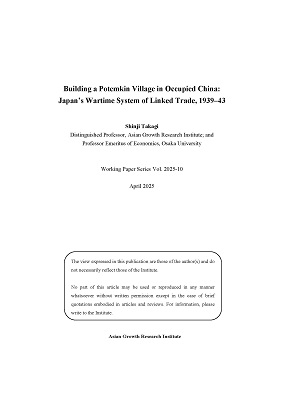Building a Potemkin Village in Occupied China: Japan’s Wartime System of Linked Trade, 1939–43

| Author | TAKAGI Shinji |
|---|---|
| Date of Publication | 2025. 4 |
| No. | 2025-10 |
| Download | 454KB |
Contents Introduction
The paper discusses the little-known exchange rate system of Japanese-occupied North China during the Second Sino-Japanese War, whereby exporters were given the right to import in the form of a piece of yellow paper, which could be sold in the secondary market. In an environment of rapid inflation where North China’s yuan was pegged to the Japanese yen and devaluation was not politically feasible, the system incentivized exports by allowing the exporters to offset their losses with the profits from selling goods imported, or the right to import goods, at the overvalued exchange rate. Following the start of the Pacific War, the system evolved to become a major scheme of facilitating trade between North and Central China under Japanese occupation. The paper, utilizing archived classified documents, reconstructs analytically how the system operated. Further, our analysis based on monthly average data confirms that the secondary market pricing of yellow paper broadly mimicked the operation of a flexible exchange rate. The system died a natural death when exploding inflation in Central China eliminated the export disincentive in North China.
